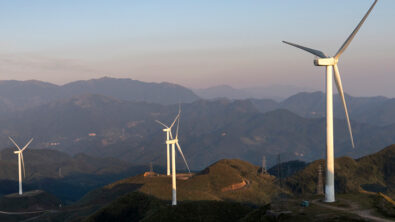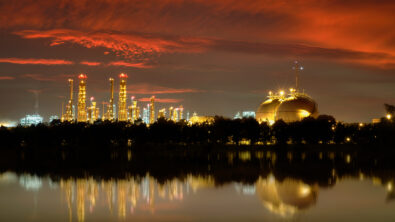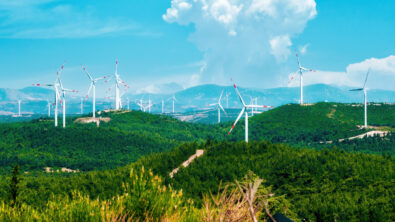Demystifying Clean Energy: 6 Top Questions Answered for Energy & Equipment Manufacturing Companies
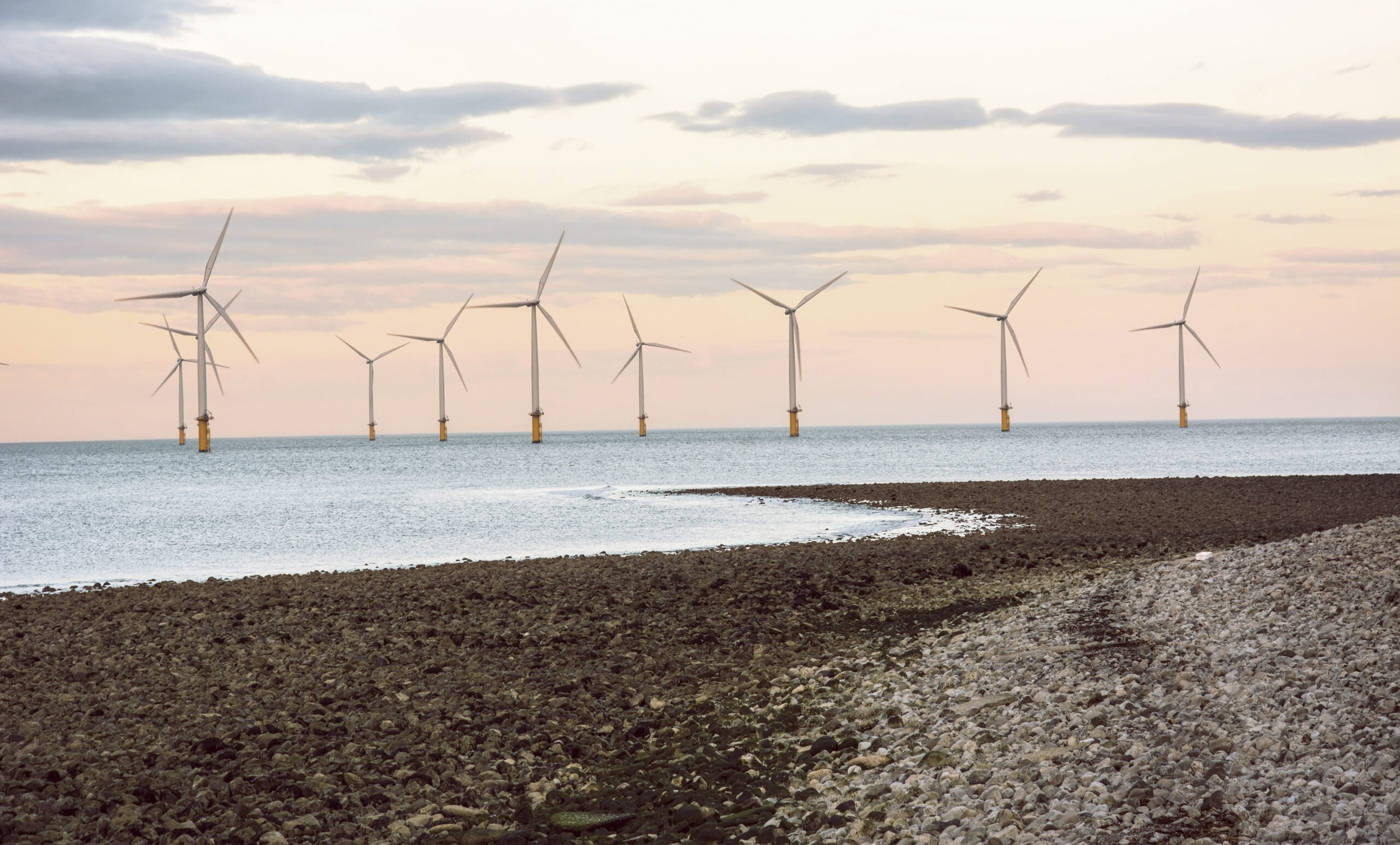
Whether it’s the energy transition, sustainability or renewable power, clean energy is a critical topic for all sub-segments of energy businesses and equipment manufacturing.
To help you and your business navigate the fast-changing clean energy landscape, I reached out to partners and customers around the globe to gather their top clean-energy-related questions and provide you with my best answers. I hope you enjoy.
What opportunities does the energy transition provide for traditional energy sources, as opposed to renewable energy sources?
Traditional energy sources like oil and gas face increased scrutiny around their emissions and contributions to climate change. At the same time, technologies developed during the energy transition offer great opportunities for oil and gas providers to dramatically improve operational efficiency and productivity.
To remain competitive and profitable, businesses can invest in new technologies like the executable digital twin to gain an extremely detailed understanding of the complete lifecycle of assets they operate and products they produce.
Whether a business produces renewable energy sources or fossil fuels, its Chief Financial Officer (CFO) must be able to understand the immediate and long-term financial impact of all activities. Technologies like design exploration gives CFOs access to rich scenario analysis that is tied to financial modeling. Inside a user-friendly digital environment, CFOs can observe a direct relationship between real asset performance and financial performance. It’s now possible to quickly understand the journey from energy molecules, whether wind, oil, nuclear or solar, to your financial EBITDA margin.
How do you think the energy transition will impact energy production levels?
Different organizations, such as the IEA, OPEC and others, have varying projections for energy production levels. As our species goes through the energy transition globally, we have to embrace the electrification we’re investing in while also making sure we keep the lights on.
Conventional oil and gas production levels will remain the same or may actually increase in the short term as we make deeper investments in energy sources such as hydrogen, wind, solar and nuclear small modular reactors.
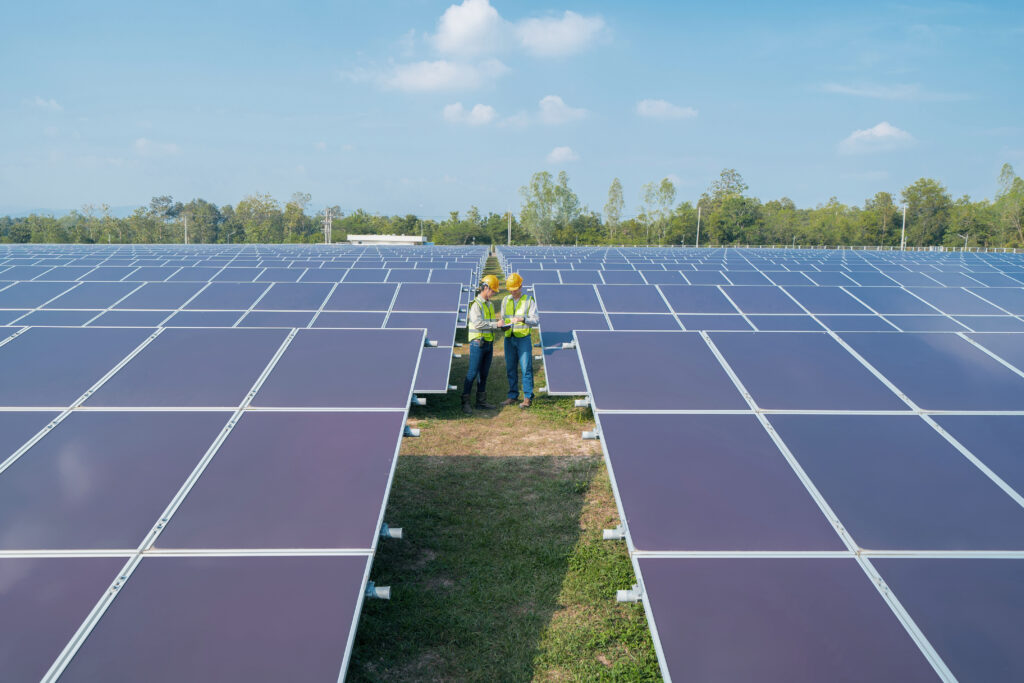
What role can power plant simulation and manufacturing simulation play in reducing emissions?
Because of huge investments in the cloud, simulation today is no longer limited by computational power. Manufacturing simulation in particular has been a deep investment for Siemens Digital Industries Software. The same challenges in molecular reactions, asset performance and emissions management for manufacturing facilities are in fact, challenges we find in power plant simulation.
Businesses now have the ability to simulate with high fidelity and take advantage of massive improvements in analysis capability that can be done in a fraction of the time. This allows them to explore options at orders of magnitude greater than just five years ago while enabling real-world improvements where emissions are actually created. The power and fidelity we have today, and the trust we have in simulation, is far greater today and is constantly improving.
How does design automation speed up the engineering design process for clean energy capital assets?
Design automation, and what we refer to as design exploration, provides a collaborative digital environment that integrates all your engineering disciplines, including civil, structural, mechanical, geospatial, electrical, and more while offering a greater systems approach.
This helps us understand how the smallest design changes can have the greatest performance impacts on clean energy capital assets like wind turbines, solar farms, hydrogen power plants and nuclear small modular reactors. We are seeing dramatic improvements in both the speed and quality of capital asset designs created using this systems approach.
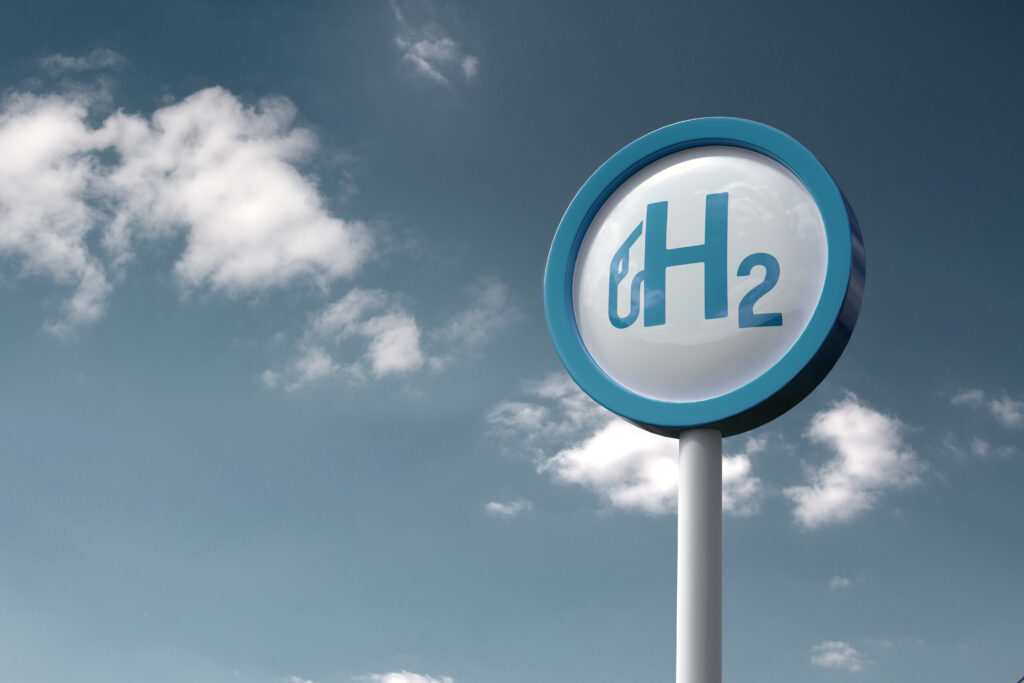
How can energy businesses reduce carbon emissions produced by their capital assets?
Our species is trying to reduce carbon emissions, as well as productivity and material waste, when we are constructing and operating capital assets. At Siemens, we call this Capital Asset Lifecycle Management. It’s a connected, holistic approach to understanding requirements, design, construction and operations, plus the emissions and waste that are associated with these activities.
When energy businesses and equipment manufacturers invest in digitalization and Capital Asset Lifecycle Management, you have an environment where you can proactively strip away great volumes of emissions and waste by visualizing, navigating and optimizing the digital twin of your process, program and project execution.
What’s your top advice for energy companies and energy equipment manufacturers who want to become more sustainable?
Sustainability is the first and most important consideration for energy companies and energy equipment manufacturers. Considering what we’ve highlighted above with investments in digitalization, addressing sustainability starts on the drawing board. And the best drawing board is a digital one.
When you start with digitalization, it’s the best use of your invested dollars. It helps energy businesses realize optimal performance, profitability and sustainability.
Sustainability is profitability, and digital investments drive sustainability.
About the author
John Nixon is the Energy and Utilities global strategy lead for Siemens Digital Industries Software.
John has worked in energy and utilities for 30+ years. He created multiple energy and technology start-ups leading business development in China, Romania, Panama and the USA. John has also led large greenfield and brownfield projects with oil and mining supermajors in Canada and China, and spearheaded pipeline asset integrity programs in the USA and Mexico. In addition, John holds patents for pipeline technology and has been a board member for multiple technology firms and university R&D associations. John was an officer in the US Army and holds a BS in Civil Engineering from Texas A&M University.
Deutsch
Ob Energiewende, Nachhaltigkeit oder erneuerbare Energien, saubere Energie ist ein kritisches Thema für alle Teilsegmente der Energiewirtschaft und des Anlagenbaus.
Um Ihnen und Ihrem Unternehmen zu helfen, sich in der sich schnell verändernden Landschaft der sauberen Energie zurechtzufinden, habe ich mich an Partner und Kunden auf der ganzen Welt gewandt, um ihre wichtigsten Fragen zu sauberer Energie zu sammeln und Ihnen meine besten Antworten zu geben. Ich hoffe, es gefällt Ihnen.
Welche Chancen bietet die Energiewende für traditionelle Energieträger im Gegensatz zu erneuerbaren Energieträgern?
Traditionelle Energiequellen wie Öl und Gas stehen in Bezug auf Emissionen und den Beitrag zum Klimawandel zunehmend unter die Lupe. Gleichzeitig bieten die im Zuge der Energiewende entwickelten Technologien große Chancen für Öl- und Gasversorger, die betriebliche Effizienz und Produktivität drastisch zu verbessern.
Um wettbewerbsfähig und profitabel zu bleiben, können Unternehmen in neue Technologien wie den ausführbaren digitalen Zwilling investieren, um ein äußerst detailliertes Verständnis des gesamten Lebenszyklus der von ihnen betriebenen Anlagen und der von ihnen hergestellten Produkte zu erhalten.
Unabhängig davon, ob ein Unternehmen erneuerbare Energiequellen oder fossile Brennstoffe produziert, muss sein Chief Financial Officer (CFO) in der Lage sein, die unmittelbaren und langfristigen finanziellen Auswirkungen aller Aktivitäten zu verstehen. Technologien wie Design Exploration bieten CFOs Zugang zu umfangreichen Szenarioanalysen, die an die Finanzmodellierung gebunden sind. In einer benutzerfreundlichen digitalen Umgebung können CFOs einen direkten Zusammenhang zwischen der Performance von Sachwerten und der finanziellen Performance beobachten. Es ist jetzt möglich, den Weg von Energiemolekülen, ob Wind, Öl, Kernkraft oder Solar, bis zu Ihrer finanziellen EBITDA-Marge schnell zu verstehen.
Wie wird sich die Energiewende Ihrer Meinung nach auf die Energieerzeugung auswirken?
Verschiedene Organisationen, wie die IEA, OPEC und andere, haben unterschiedliche Prognosen bezüglich des Umfangs der Energieproduktion. Während unsere Spezies weltweit die Energiewende durchläuft, müssen wir die Elektrifizierung, in die wir investieren, annehmen und gleichzeitig sicherstellen, dass die Lichter weiterhin brennen.
Das Niveau der konventionellen Öl- und Gasproduktion wird gleich bleiben oder könnte kurzfristig sogar steigen, wenn wir verstärkt Investitionen in Energiequellen wie Wasserstoff, Wind, Sonne und kleine modulare Kernreaktoren tätigen.

Welche Rolle können Kraftwerkssimulation und Fertigungssimulation bei der Reduzierung von Emissionen spielen?
Aufgrund der enormen Investitionen in die Cloud ist die Simulation heute nicht mehr durch die Rechenleistung begrenzt. Insbesondere die Fertigungssimulation war für Siemens Digital Industries Software eine große Investition. Die gleichen Herausforderungen bei molekularen Reaktionen, der Anlagenleistung und dem Emissionsmanagement für Produktionsanlagen sind in der Tat Herausforderungen, die wir in der Kraftwerkssimulation finden.
Unternehmen haben jetzt die Möglichkeit, mit hoher Genauigkeit zu simulieren und von massiven Verbesserungen der Analysemöglichkeiten zu profitieren, die in einem Bruchteil der Zeit durchgeführt werden können. Dies ermöglicht es ihnen, Optionen in Größenordnungen zu erkunden, die größer sind als noch vor fünf Jahren, und gleichzeitig reale Verbesserungen dort zu ermöglichen, wo Emissionen tatsächlich entstehen. Die heute verfügbare Leistungsfähigkeit und Genauigkeit und das Vertrauen, das wir in die Simulation setzen, sind heute viel größer und werden ständig verbessert.
Wie beschleunigt die Automatisierung der Planung den Konstruktionsprozess für Investitionen im Bereich der sauberen Energie?
Die Konstruktionsautomatisierung und das, was wir als Design-Exploration bezeichnen, begründen eine kollaborative digitale Umgebung, die alle Ihre technischen Disziplinen einschließlich Bauwesen, Struktur, Mechanik, Geo, Elektrik und mehr integriert und zudem einen umfassenderen Systemansatz bietet.
Dies hilft uns zu verstehen, wie die kleinsten Konstruktionsänderungen die größten Auswirkungen auf die Leistung von Investitionsanlagen für saubere Energie wie Windturbinen, Solarparks, Wasserstoffkraftwerke und kleine modulare Kernreaktoren haben können. Wir sehen dramatische Verbesserungen sowohl bei der Geschwindigkeit als auch bei der Qualität von Capital-Asset-Designs, die mit diesem Systemansatz erstellt werden.

Wie können Energieunternehmen die CO2-Emissionen ihrer Assets reduzieren?
Unsere Spezies versucht, Kohlenstoffemissionen sowie Produktivität und Materialverschwendung zu reduzieren, wenn wir Kapitalanlagen bauen und betreiben. Bei Siemens nennen wir das Capital Asset Lifecycle Management. Es handelt sich um einen vernetzten, ganzheitlichen Ansatz zum Verständnis der Anforderungen, der Konstruktion, des Baus und des Betriebs sowie der Emissionen und des Abfalls, die mit diesen Aktivitäten verbunden sind.
Wenn Energieunternehmen und Anlagenhersteller in Digitalisierung und Capital Asset Lifecycle Management investieren, haben Sie eine Umgebung, in der Sie proaktiv große Mengen an Emissionen und Abfall einsparen können, indem Sie den digitalen Zwilling Ihrer Prozess-, Programm- und Projektausführung visualisieren, navigieren und optimieren.
Was ist Ihr wichtigster Rat für Energieunternehmen und Hersteller von Energieanlagen, die nachhaltiger werden wollen?
Nachhaltigkeit ist die erste und wichtigste Überlegung für Energieunternehmen und Hersteller von Energieanlagen. In Bezug auf die oben in Zusammenhang mit Investitionen und Digitalisierung angesprochenen Punkte beginnt die Auseinandersetzung mit Nachhaltigkeit auf dem Reißbrett. Und das beste Reißbrett ist ein digitales.
Wenn Sie mit der Digitalisierung beginnen, ist ihr investiertes Geld bestens angelegt. Sie hilft Energieunternehmen, optimale Leistung, Rentabilität und Nachhaltigkeit zu erzielen.
Nachhaltigkeit bedeutet Rentabilität, und Investitionen in digitale Technologien fördern die Nachhaltigkeit.
Français
Qu'il s'agisse de la transition énergétique, de la durabilité ou de l'énergie renouvelable, l'énergie propre est un sujet essentiel pour tous les sous-segments de l'énergie et de la fabrication d'équipements.
Pour vous aider, vous et votre entreprise, à naviguer dans le paysage de l'énergie propre en constante évolution, j'ai contacté des partenaires et des clients du monde entier pour recueillir les principales questions relatives à l'énergie propre et vous fournir mes meilleures réponses. J'espère que vous apprécierez.
Quelles opportunités la transition énergétique offre-t-elle aux sources d'énergie traditionnelles, par opposition aux sources d'énergie renouvelables ?
Les sources d'énergie traditionnelles comme le pétrole et le gaz font l'objet d'une surveillance accrue en ce qui concerne leurs émissions et leur contribution au changement climatique. Dans le même temps, les technologies développées au cours de la transition énergétique offrent aux fournisseurs de pétrole et de gaz de grandes possibilités d'améliorer considérablement l'efficacité opérationnelle et la productivité.
Pour rester compétitives et rentables, les entreprises peuvent investir dans de nouvelles technologies telles que le jumeau numérique exécutable afin d'acquérir une compréhension extrêmement détaillée du cycle de vie complet des actifs qu'elles exploitent et des produits qu'elles fabriquent.
Qu'une entreprise produise des sources d'énergie renouvelable ou des combustibles fossiles, son directeur financier (CFO) doit être en mesure de comprendre l'impact financier immédiat et à long terme de l'ensemble de ses activités. Des technologies telles que l'exploration de la conception permettent aux directeurs financiers d'accéder à des analyses de scénarios riches qui sont liées à la modélisation financière. À l'intérieur d'un environnement digital convivial, les directeurs financiers peuvent observer une relation directe entre la performance des actifs réels et la performance financière. Il est désormais possible de comprendre rapidement le parcours des molécules d'énergie, qu'elles soient éoliennes, pétrolières, nucléaires ou solaires, jusqu'à votre marge financière EBITDA.
Selon vous, quel sera l'impact de la transition énergétique sur les niveaux de production d'énergie ?
Différentes organisations, telles que l'AIE, l'OPEP et d'autres, ont des projections variables concernant les niveaux de production d'énergie. Alors que nous traversons une période de transition énergétique à l'échelle mondiale, nous devons nous réjouir de l'électrification dans laquelle nous investissons tout en veillant à ce que les lumières restent allumées.
Les niveaux de production de pétrole et de gaz conventionnels resteront les mêmes, voire augmenteront à court terme, car nous investissons davantage dans des sources d'énergie telles que l'hydrogène, l'énergie éolienne, l'énergie solaire et les petits réacteurs nucléaires modulaires.

Quel rôle la simulation des centrales électriques et la simulation de la fabrication peuvent-elles jouer dans la réduction des émissions ?
Grâce aux énormes investissements dans le cloud, la simulation n'est aujourd'hui plus limitée par la puissance de calcul. La simulation de la fabrication en particulier a été un investissement important pour Siemens Digital Industries Software. Les défis liés aux réactions moléculaires, à la performance des actifs et à la gestion des émissions pour les installations de fabrication sont en fait les mêmes que ceux que l'on retrouve dans la simulation des centrales électriques.
Les entreprises ont désormais la possibilité de simuler avec une grande fidélité et de tirer parti des améliorations massives de la capacité d'analyse qui peut être réalisée en une fraction du temps. Cela leur permet d'explorer des options d'un ordre de grandeur supérieur à celui d'il y a seulement cinq ans, tout en apportant des améliorations concrètes là où les émissions sont effectivement produites. La puissance et la fidélité dont nous disposons aujourd'hui, ainsi que la confiance que nous accordons à la simulation, sont bien plus grandes aujourd'hui et ne cessent de s'améliorer.
Comment l'automatisation de la conception accélère-t-elle le processus de conception technique des actifs dans le domaine de l'énergie propre ?
L'automatisation de la conception, et ce que nous appelons l'exploration de la conception, fournit un environnement numérique collaboratif qui intègre toutes vos disciplines d'ingénierie, y compris le génie civil, structurel, mécanique, géospatial, électrique, et plus encore, tout en offrant une plus grande approche des systèmes.
Cela nous aide à comprendre comment les plus petites modifications de conception peuvent avoir le plus grand impact sur les performances des actifs liés à l'énergie propre tels que les éoliennes, les parcs solaires, les centrales à hydrogène et les petits réacteurs nucléaires modulaires. Nous constatons des améliorations spectaculaires en termes de rapidité et de qualité de la conception des actifs créés à l'aide de cette approche systémique.

Comment les entreprises énergétiques peuvent-elles réduire les émissions de carbone produites par leurs actifs ?
Notre espèce s'efforce de réduire les émissions de carbone, ainsi que la productivité et le gaspillage de matériaux, lors de la construction et de l'exploitation d'actifs. Chez Siemens, nous appelons cela la gestion du cycle de vie des actifs. Il s'agit d'une approche connectée et holistique pour comprendre les exigences, la conception, la construction et les opérations, ainsi que les émissions et les déchets associés à ces activités.
Lorsque les entreprises énergétiques et les fabricants d'équipements investissent dans la digitalisation et la gestion du cycle de vie des actifs, ils disposent d'un environnement dans lequel ils peuvent éliminer de manière proactive d'importants volumes d'émissions et de déchets en visualisant, en naviguant et en optimisant le jumeau numérique du processus, du programme et de l'exécution du projet.
Quel est votre meilleur conseil pour les entreprises énergétiques et les fabricants d'équipements énergétiques qui souhaitent renforcer leur durabilité ?
La durabilité est la première et la plus importante considération pour les entreprises énergétiques et les fabricants d'équipements énergétiques. Compte tenu de ce que nous avons souligné ci-dessus avec les investissements dans la digitalisation, la durabilité commence sur la planche à dessin. Et la meilleure planche à dessin est une planche à dessin numérique.
Commencer par la digitalisation, c'est la meilleure façon d'utiliser l'argent investi. Cela aide les entreprises énergétiques à atteindre une performance, une rentabilité et une durabilité optimales.
La durabilité est synonyme de rentabilité, et les investissements numériques favorisent la durabilité.
简体中文
无论是能源转型、可持续发展还是可再生能源,清洁能源都是能源业务和设备制造领域中所有细分市场的一项关键议题。
清洁能源领域的形势瞬息万变。为帮助您和贵企业应对这一状况,我联系了世界各地的合作伙伴和客户,收集了他们特别关注的清洁能源问题,并尽我所能地加以解答。希望您喜欢。
与可再生能源相比,能源转型为传统能源提供了哪些机遇?
在排放和气候变化影响方面,石油和天然气等传统能源面临着越来越多的审查。与此同时,在能源转型期间开发的技术为石油和天然气供应商提供了巨大机遇,可以大幅提高运营效率和生产率。
为了保持竞争力和盈利能力,企业可以投资于可执行的数字孪生等新技术,以细致入微地了解其所运营资产和所生产产品的完整生命周期。
无论企业生产的是可再生能源还是化石燃料,其首席财务官 (CFO) 都必须能够了解所有活动的即时和长期财务影响。通过设计探索等技术,CFO 可以访问与财务建模相关的丰富场景分析。在用户友好的数字化环境中,CFO 可以观察实际资产绩效与财务绩效之间的直接关系。无论是风能、石油、核能还是太阳能,现在您可以快速了解从能源分子到财务税息折旧及摊销前利润 (EBITDA) 的过程。
您认为能源转型将如何影响能源生产水平?
国际能源署 (IEA)、欧佩克 (OPEC) 等不同组织对能源生产水平有不同的预测。随着能源转型在全球范围内铺开,我们必须顺应我们所投资的电气化浪潮,同时确保日常生活不受影响。
随着我们对氢能、风能、太阳能和小型模块化核反应堆等能源的投资不断加深,传统的石油和天然气生产水平在短期内内将保持不变,甚至实际上会有所增加。

电厂仿真和制造仿真在减排方面可发挥哪些作用?
受益于巨大的云投资,当今的仿真不再受限于算力。具体而言,制造仿真始终是 Siemens Digital Industries Software 的一项深度投资。实际上,我们在制造设施中遇到的分子反应、资产性能和排放管理等挑战与我们在电厂仿真中遇到的挑战相同。
企业现在能够进行高保真度仿真,利用已获巨大改善的分析能力在短时间内完成仿真。这样,企业能够探索的选项比五年前高出几个数量级,并且能够在产生实际排放的现实领域中实现改进。对于我们今天拥有的仿真而言,其功能、保真度和可信度远超以往,而且还在不断改进。
设计自动化如何加快清洁能源资本资产的工程设计流程?
设计自动化以及我们所说的设计探索提供了协同式数字化环境,该环境不仅集成了包括土木、结构、机械、地理空间、电气等在内的所有工程学科,还提供了更加强大的系统方法。
这有助于我们了解一项极小的设计更改如何对风力涡轮机、太阳能发电场、氢能发电厂和小型模块化核反应堆等清洁能源资本资产造成极大的性能影响。我们可以看到,使用这种系统方法创建的资本资产设计在速度和质量方面都有显著的提高。

能源企业如何减少其资本资产造成的碳排放?
当建造和运营资本资产时,我们会努力降低碳排放、提高生产力以及减少材料浪费。在西门子,我们称之为资本资产生命周期管理。这是一种相互关联的整体方法,可用于了解需求、设计、建造和运营活动,以及与这些活动相关的排放和浪费状况。
当能源企业和设备制造商投资于数字化和资本资产生命周期管理时,将为您创造一个环境。在该环境中,您可以对流程、项目和工程的执行数字孪生进行可视化、引导和优化,从而主动减少大量的排放和浪费。
您对希望提高可持续性的能源公司和能源设备制造商有哪些首要建议?
可持续性是能源公司和能源设备制造商要考虑的首要因素。考虑到上文中我们在数字化投资方面强调的内容,可持续发展问题的解决应从设计阶段开始。数字化设计是更好的设计。
当您开始数字化时,它可保证您的每一分投资都物有所值。它可帮助能源企业实现理想绩效、盈利和可持续发展。
可持续能力即盈利能力,而数字化投资可提高可持续能力。
Italiano
Che si tratti di transizione energetica, sostenibilità o energia rinnovabile, l'energia pulita è un tema cruciale per tutti i sottosegmenti delle aziende energetiche e della produzione di apparecchiature.
Per aiutare le aziende a orientarsi nel panorama in rapida evoluzione dell'energia pulita, ho contattato partner e clienti di tutto il mondo per raccogliere le loro domande più frequenti in materia di energia pulita e fornire le mie risposte a riguardo. Spero possa esservi d’aiuto.
Quali opportunità offre la transizione energetica per le fonti energetiche tradizionali, rispetto alle fonti energetiche rinnovabili?
Le fonti energetiche tradizionali, come il petrolio e il gas, devono affrontare un maggiore controllo sulle loro emissioni e sul loro contributo al cambiamento climatico. Allo stesso tempo, le tecnologie sviluppate durante la transizione energetica offrono grandi opportunità ai fornitori di petrolio e gas per migliorare notevolmente l'efficienza operativa e la produttività.
Per rimanere competitive e redditizie, le aziende possono investire in nuove tecnologie come il digital twin eseguibile per ottenere una comprensione estremamente dettagliata dell'intero ciclo di vita degli asset che gestiscono e dei prodotti che producono.
Indipendentemente dal fatto che un'azienda produca fonti di energia rinnovabile o combustibili fossili, il suo Chief Financial Officer (CFO) deve essere in grado di comprendere l'impatto finanziario immediato e a lungo termine di tutte le attività. Tecnologie come l'esplorazione del progetto offrono ai CFO l'accesso a un'analisi avanzata degli scenari legata alla modellazione finanziaria. All'interno di un ambiente digitale user-friendly, i CFO possono osservare la relazione diretta tra la performance degli asset reali e la performance finanziaria. Ora è possibile comprendere rapidamente il percorso dalle molecole energetiche, siano esse eoliche, petrolifere, nucleari o solari, al margine EBITDA finanziario.
In che modo la transizione energetica influirà sui livelli di produzione di energia?
Diverse organizzazioni, come l'IEA, l'OPEC e altre, hanno proiezioni diverse per i livelli di produzione di energia. Mentre la nostra specie attraversa la transizione energetica a livello globale, dobbiamo abbracciare l'elettrificazione in cui stiamo investendo, assicurandoci anche di mantenere le luci accese.
I livelli di produzione di petrolio e gas convenzionali rimarranno invariati o potrebbero addirittura aumentare nel breve termine, grazie a maggiori investimenti in fonti energetiche come l'idrogeno, l'eolico, il solare e i piccoli reattori modulari nucleari.

Che ruolo possono svolgere la simulazione delle centrali elettriche e la simulazione della produzione nella riduzione delle emissioni?
A causa degli enormi investimenti nel cloud, la simulazione oggi non è più limitata dalla potenza di calcolo. La simulazione della produzione, in particolare, è stata un investimento importante per Siemens Digital Industries Software. Le sfide delle reazioni molecolari, delle prestazioni degli asset e della gestione delle emissioni per gli impianti di produzione sono in realtà le stesse che troviamo nella simulazione delle centrali elettriche.
Le aziende hanno ora la possibilità di simulare con alta fedeltà e sfruttare enormi miglioramenti nella capacità di analisi che possono essere eseguiti in una frazione del tempo. Ciò consente loro di esplorare opzioni di ordini di grandezza superiori rispetto a soli cinque anni fa, consentendo al contempo miglioramenti nel mondo reale in cui le emissioni vengono effettivamente create. La potenza e la fedeltà di cui disponiamo oggi, e la fiducia che abbiamo nella simulazione, sono molto più grandi e in costante miglioramento.
In che modo l’automazione accelera il processo di progettazione tecnica per i beni strumentali del settore energetico?
L'automazione della progettazione, e ciò che chiamiamo esplorazione del progetto, fornisce un ambiente digitale collaborativo che integra tutte le discipline ingegneristiche, tra cui civile, strutturale, meccanica, geospaziale, elettrica e altro ancora, offrendo al contempo un approccio sistemico più ampio.
Questo ci aiuta a capire come le più piccole modifiche progettuali possano avere il maggiore impatto sulle prestazioni dei beni strumentali promotori dell'energia pulita come turbine eoliche, parchi solari, centrali elettriche a idrogeno e piccoli reattori modulari nucleari. Stiamo assistendo a notevoli miglioramenti sia nella velocità sia nella qualità dei progetti di beni strumentali, creati utilizzando questo approccio sistemico.

In che modo le aziende energetiche possono ridurre le emissioni di carbonio prodotte dai loro beni strumentali?
La nostra specie sta cercando di ridurre le emissioni di carbonio, così come la produttività e lo spreco di materiali, quando costruiamo e gestiamo beni capitali. Noi di Siemens lo chiamiamo Capital Asset Lifecycle Management. Si tratta di un approccio connesso e olistico alla comprensione dei requisiti, della progettazione, della costruzione e delle operazioni, nonché delle emissioni e dei rifiuti associati a queste attività.
Quando le aziende energetiche e i produttori di apparecchiature investono nella digitalizzazione e in Capital Asset Lifecycle Management, si dispone di un ambiente in cui è possibile eliminare in modo proattivo grandi volumi di emissioni e sprechi visualizzando, navigando e ottimizzando il digital twin del processo, del programma e dell'esecuzione del progetto.
Qual è consiglio migliore che daresti alle aziende energetiche e ai produttori di apparecchiature del settore che vogliono diventare più sostenibili?
La sostenibilità è la prima e più importante considerazione per le aziende energetiche e i produttori di apparecchiature. Alla luce di quanto evidenziato in precedenza con gli investimenti nella digitalizzazione, affrontare la sostenibilità inizia dal tavolo da disegno. E il miglior tavolo da disegno è quello digitale.
Iniziare con la digitalizzazione è il miglior investimento. Aiuta le aziende del settore energetico a ottenere prestazioni, redditività e sostenibilità ottimali.
La sostenibilità è redditività e gli investimenti digitali favoriscono la sostenibilità.
日本語
エネルギー事業と機器製造に関わるすべての部門にとって、エネルギー転換、持続可能エネルギー、再生可能エネルギーといったクリーンエネルギーは重要なテーマです。
クリーンエネルギーを取り巻く急速な変化に立ち向かう企業を支援するため、筆者は世界中のパートナーや顧客からクリーンエネルギーに関する質問を募り、それらに対する回答をまとめました。ぜひお読みください。
エネルギー転換は、従来のエネルギー源ではなく、再生可能エネルギー源にどのような機会をもたらすでしょうか。
石油やガスなどの従来のエネルギー源は、排出量や気候変動への影響からより厳しい目が向けられています。一方、エネルギー転換の過程で開発された技術は、石油・ガス事業者の業務効率と生産性を劇的に向上させる絶好の機会を提供します。
競争力と収益性を維持するため、企業が実行可能なデジタルツインなどの新しい技術に投資することで、操業資産と製品のライフサイクル全体を詳細に把握できます。
再生可能エネルギーであろうと、化石燃料であろうと、エネルギーを作り出す企業の最高財務責任者 (CFO) は、あらゆる企業活動が短期的ならびに長期的に財務面に及ぼす影響を正しく理解しなければなりません。設計探索などの技術を活用することで、CFOは財務モデリングに関連する豊富なシナリオを分析できます。ユーザーフレンドリーなデジタル環境のなかで、実物資産のパフォーマンスと財務状況に対する直接的な関係を観察できます。それにより、風力、石油、原子力、太陽光など、個別のエネルギーレベルからEBITDAまでの流れを把握します。
エネルギー転換はエネルギー生産レベルにどのような影響を与えると思いますか。
IEA、OPECなど、多くの組織がエネルギー生産レベルを予測しています。地球規模でエネルギー転換が進むなか、人類は、電気を途絶えさせることなく、電動化への投資を続けていく必要があります。
水素、風力、太陽光、原子力などのエネルギー源への投資が増加するとしても、短期的には従来の石油・ガスの生産レベルは変わらないか、実際には増加すると考えられます。

発電所シミュレーションと製造シミュレーションは、排出量の削減にどのような役割を果たせるでしょうか。
クラウドに対する多額の投資が功を奏した結果、シミュレーションで演算パワーの限界を感じることはなくなりました。シーメンスデジタルインダストリーズソフトウェアは特に、製造シミュレーションに膨大な投資をしてきました。事実、分子反応、資産パフォーマンス、排出管理など、製造施設には発電所のシミュレーションと同様の課題があります。
現在は、忠実度の高いシミュレーションと高速の解析が可能です。これにより、わずか5年前とは比較にならない数の設計案を探索し、実世界に対する排出の影響を抑えることができます。今日のシミュレーションのパワー、忠実度、精度はかつてない水準に達しており、継続的に向上し続けています。
クリーンエネルギー資本資産のエンジニアリング設計プロセスは、設計の自動化によってどう加速するでしょうか。
設計の自動化と設計探索のソリューションは、コラボレーション可能なデジタル環境をベースにしています。土木、構造、機械、地理空間、電気など、すべてのエンジニアリング分野を網羅した優れたシステム手法を提供します。
この手法は、風力タービン、太陽光発電所、水素発電所、原子力小型モジュール炉などのクリーンエネルギー資本資産の開発において、わずかな設計変更がパフォーマンスにどの程度大きな影響を与えるかを理解するのに役立ちます。驚くほどの速さと高い品質で資本資産を設計できます。

エネルギー企業は資本資産が排出する炭素量をどのように削減できるでしょうか。
人類は今日、炭素排出量と材料廃棄が最小で生産性が最高の資本資産を建設および操業しようとしています。シーメンスではこれを資本資産ライフサイクル管理と呼んでいます。これは、エネルギー施設の要件管理から設計、建設、操業に至る一連の活動で排出される炭素量と廃棄物を理解するための、接続された包括的なアプローチです。
エネルギー企業や機器メーカーがデジタライゼーションと資本資産ライフサイクル管理ソリューションに投資することで、プロセス、プログラム、プロジェクト実行のデジタルツインを視覚化、ナビゲート、最適化できるので、最終的には排出量と排気量の削減に貢献します。
より持続可能でありたいと考えるエネルギー企業や機器メーカーにどのようなアドバイスを送りますか。
エネルギー企業とエネルギー機器メーカーにとって、持続可能性は最も重要な考慮事項です。デジタライゼーションへの投資についてここまで述べてきたことからも分かるように、持続可能性への取り組みは計画段階から始まります。まず、製図版をデジタル化すると最高です。
デジタル化に取り組むことで、投資した資金を最大限に活用できます。デジタル化はエネルギー企業が最適なパフォーマンス、収益性、持続可能性を実現するのに役立ちます。
持続可能性こそが収益性であり、デジタル投資は持続可能性を後押しします。
한국어
エネルギー事業と機器製造に関わるすべての部門にとって、エネルギー転換、持続可能エネルギー、再生可能エネルギーといったクリーンエネルギーは重要なテーマです。
クリーンエネルギーを取り巻く急速な変化に立ち向かう企業を支援するため、筆者は世界中のパートナーや顧客からクリーンエネルギーに関する質問を募り、それらに対する回答をまとめました。ぜひお読みください。
エネルギー転換は、従来のエネルギー源ではなく、再生可能エネルギー源にどのような機会をもたらすでしょうか。
石油やガスなどの従来のエネルギー源は、排出量や気候変動への影響からより厳しい目が向けられています。一方、エネルギー転換の過程で開発された技術は、石油・ガス事業者の業務効率と生産性を劇的に向上させる絶好の機会を提供します。
競争力と収益性を維持するため、企業が実行可能なデジタルツインなどの新しい技術に投資することで、操業資産と製品のライフサイクル全体を詳細に把握できます。
再生可能エネルギーであろうと、化石燃料であろうと、エネルギーを作り出す企業の最高財務責任者 (CFO) は、あらゆる企業活動が短期的ならびに長期的に財務面に及ぼす影響を正しく理解しなければなりません。設計探索などの技術を活用することで、CFOは財務モデリングに関連する豊富なシナリオを分析できます。ユーザーフレンドリーなデジタル環境のなかで、実物資産のパフォーマンスと財務状況に対する直接的な関係を観察できます。それにより、風力、石油、原子力、太陽光など、個別のエネルギーレベルからEBITDAまでの流れを把握します。
エネルギー転換はエネルギー生産レベルにどのような影響を与えると思いますか。
IEA、OPECなど、多くの組織がエネルギー生産レベルを予測しています。地球規模でエネルギー転換が進むなか、人類は、電気を途絶えさせることなく、電動化への投資を続けていく必要があります。
水素、風力、太陽光、原子力などのエネルギー源への投資が増加するとしても、短期的には従来の石油・ガスの生産レベルは変わらないか、実際には増加すると考えられます。

発電所シミュレーションと製造シミュレーションは、排出量の削減にどのような役割を果たせるでしょうか。
クラウドに対する多額の投資が功を奏した結果、シミュレーションで演算パワーの限界を感じることはなくなりました。シーメンスデジタルインダストリーズソフトウェアは特に、製造シミュレーションに膨大な投資をしてきました。事実、分子反応、資産パフォーマンス、排出管理など、製造施設には発電所のシミュレーションと同様の課題があります。
現在は、忠実度の高いシミュレーションと高速の解析が可能です。これにより、わずか5年前とは比較にならない数の設計案を探索し、実世界に対する排出の影響を抑えることができます。今日のシミュレーションのパワー、忠実度、精度はかつてない水準に達しており、継続的に向上し続けています。
クリーンエネルギー資本資産のエンジニアリング設計プロセスは、設計の自動化によってどう加速するでしょうか。
設計の自動化と設計探索のソリューションは、コラボレーション可能なデジタル環境をベースにしています。土木、構造、機械、地理空間、電気など、すべてのエンジニアリング分野を網羅した優れたシステム手法を提供します。
この手法は、風力タービン、太陽光発電所、水素発電所、原子力小型モジュール炉などのクリーンエネルギー資本資産の開発において、わずかな設計変更がパフォーマンスにどの程度大きな影響を与えるかを理解するのに役立ちます。驚くほどの速さと高い品質で資本資産を設計できます。

エネルギー企業は資本資産が排出する炭素量をどのように削減できるでしょうか。
人類は今日、炭素排出量と材料廃棄が最小で生産性が最高の資本資産を建設および操業しようとしています。シーメンスではこれを資本資産ライフサイクル管理と呼んでいます。これは、エネルギー施設の要件管理から設計、建設、操業に至る一連の活動で排出される炭素量と廃棄物を理解するための、接続された包括的なアプローチです。
エネルギー企業や機器メーカーがデジタライゼーションと資本資産ライフサイクル管理ソリューションに投資することで、プロセス、プログラム、プロジェクト実行のデジタルツインを視覚化、ナビゲート、最適化できるので、最終的には排出量と排気量の削減に貢献します。
より持続可能でありたいと考えるエネルギー企業や機器メーカーにどのようなアドバイスを送りますか。
エネルギー企業とエネルギー機器メーカーにとって、持続可能性は最も重要な考慮事項です。デジタライゼーションへの投資についてここまで述べてきたことからも分かるように、持続可能性への取り組みは計画段階から始まります。まず、製図版をデジタル化すると最高です。
デジタル化に取り組むことで、投資した資金を最大限に活用できます。デジタル化はエネルギー企業が最適なパフォーマンス、収益性、持続可能性を実現するのに役立ちます。
持続可能性こそが収益性であり、デジタル投資は持続可能性を後押しします。
